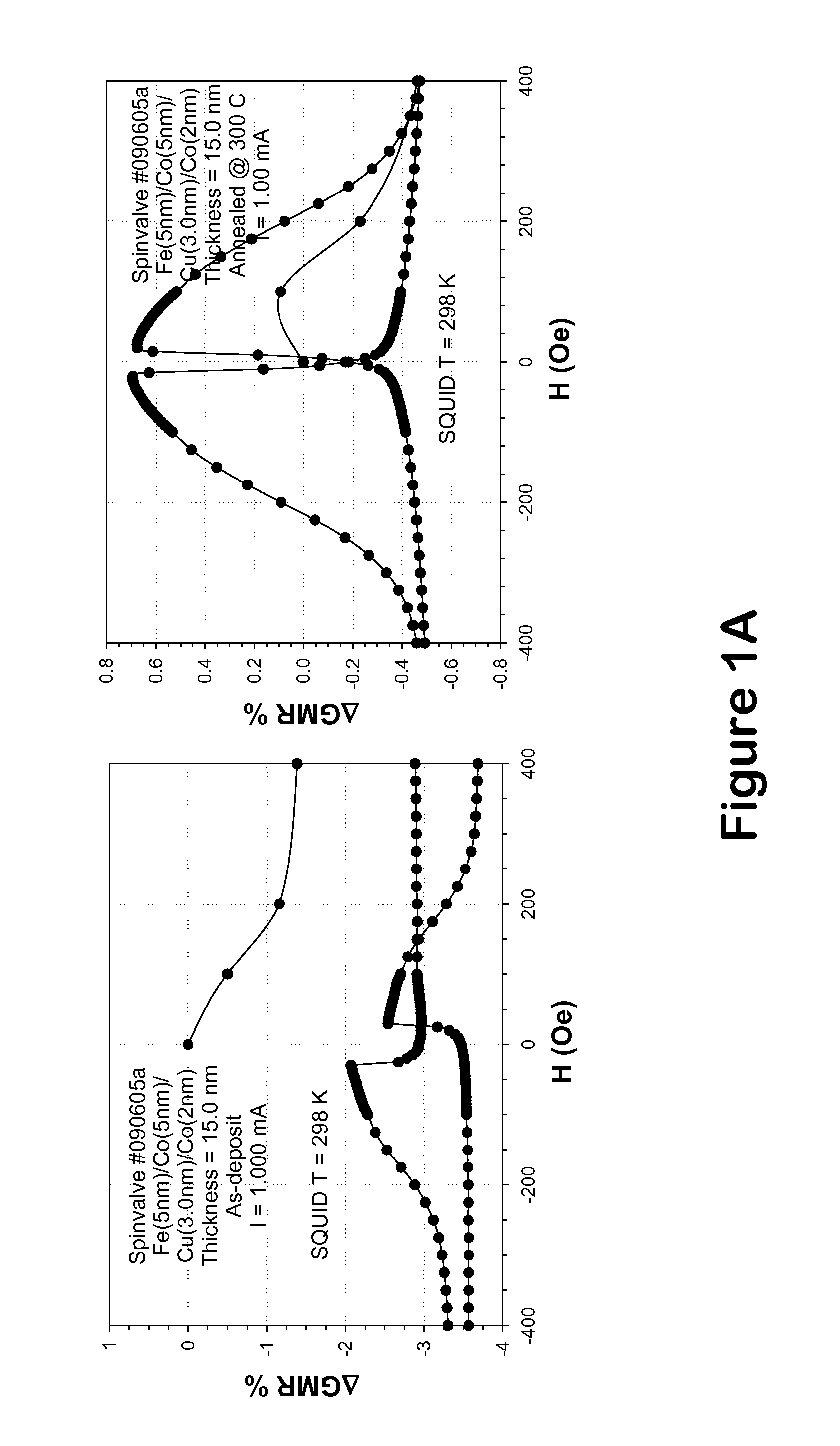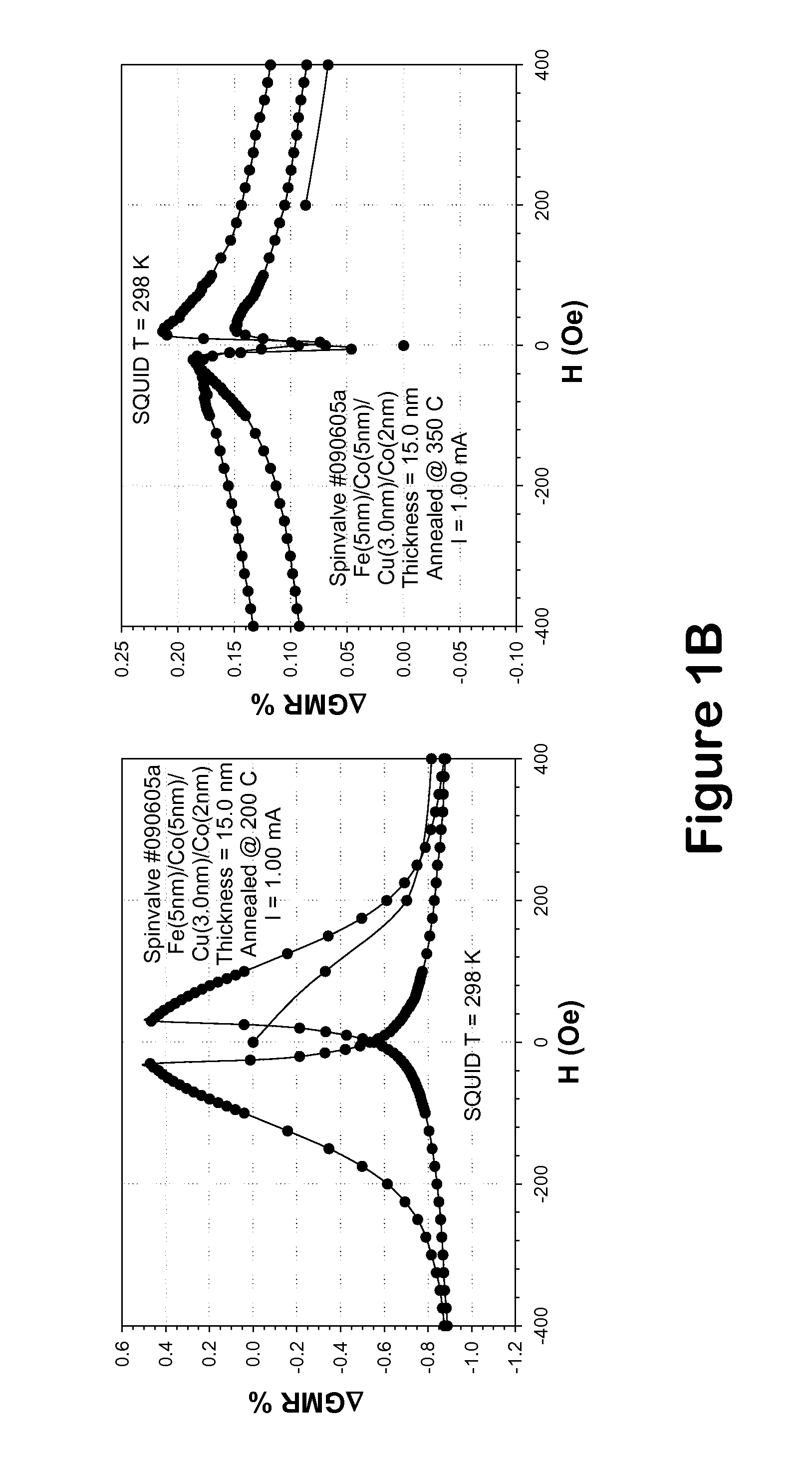System and method for the fabrication, characterization and use of magnetic corrosion and chemical sensors
a technology of magnetic corrosion and chemical sensors, applied in weather/light/corrosion resistance, instruments, record information storage, etc., can solve the problems of reducing the service life of the device, affecting the performance of the device, and affecting the use of the devi
- Summary
- Abstract
- Description
- Claims
- Application Information
AI Technical Summary
Benefits of technology
Problems solved by technology
Method used
Image
Examples
Embodiment Construction
[0061]This invention utilizes combined property of corrosion protection and controlled chemical reaction rates for a Cobalt (Co) top layer in a magnetic spin valve. The degree of chemical reaction is monitored by measuring the changes in magnetic property of the top Co layer, which is very sensitive to the occurrence of corrosion and chemical reaction. It has been demonstrated that the magnetic property of a thin Co layer to chemical reaction at the atomic scale can be easily quantitatively measured using spin valves as a sensing unit. The most noticeable magnetic property change that is affected by corrosion and chemical reaction is the magnetic switching field in a small applied magnetic field. The change in switching field can be easily measured using a spin valve with GMR effect with Co as the top magnetic layer.
[0062]To achieve ultra-high sensitivity, the corrosive-condition sensitive media in the sensors is preferably in the form of nano-structured magnetic materials such as p...
PUM
| Property | Measurement | Unit |
|---|---|---|
| relative humidity | aaaaa | aaaaa |
| diameters | aaaaa | aaaaa |
| corrosion rates | aaaaa | aaaaa |
Abstract
Description
Claims
Application Information
 Login to View More
Login to View More - R&D
- Intellectual Property
- Life Sciences
- Materials
- Tech Scout
- Unparalleled Data Quality
- Higher Quality Content
- 60% Fewer Hallucinations
Browse by: Latest US Patents, China's latest patents, Technical Efficacy Thesaurus, Application Domain, Technology Topic, Popular Technical Reports.
© 2025 PatSnap. All rights reserved.Legal|Privacy policy|Modern Slavery Act Transparency Statement|Sitemap|About US| Contact US: help@patsnap.com



